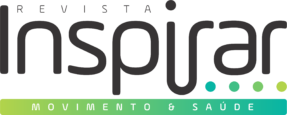 ☰
☰
 ☰
☰

Edição: 2016, Ed.3-JUL-AGO-SET
O acidente vascular cerebral (AVC) do tipo isquêmico representa 80% dos casos, enquanto que os 20% restantes correspondem ao tipo hemorrágico.
Bárbara Martins Soares Cruz1, Roberto Hugo Gonçalves Martins Filho2, Maria Ayrtes Ximenes Ponte Colaço3
O acidente vascular cerebral (AVC) do tipo isquêmico representa 80% dos casos, enquanto que os 20% restantes correspondem ao tipo hemorrágico. O AVC isquêmico é caracterizado pela morte de parte da massa encefálica por consequência da obstrução dos vasos que nutrem o encéfalo. Devido a grande incidência global e gravidade das sequelas geradas pelo AVC, torna-se indispensável conhecer tratamentos fisioterápicos mais eficazes para essa patologia. O objetivo desse estudo foi revisar e analisar as publicações dos ultimos dez anos sobre propostas de reabilitação fisioterápica em pacientes com sequelas motoras de AVC isquêmico. A pesquisa da literatura foi realizada nas bases de dados eletrônicas: MedLine, LILACS, Cochrane e SciELO nos últimos dez anos. Utilizando os termos ‘Acidente vascular cerebral isquêmico, Fisioterapia, Reabilitação, Hemiparesia. Foram encontrados estudos apresentando protocolos de tratamento que proporcionam resultados favoráveis no ganho de força muscular, diminuição da espasticidade, inibição do padrão flexor, melhora no condicionamento físico, maior equilíbrio e regulação da frequência cardíaca ao esforço. É possível afirmar que algumas técnicas analisadas nos trabalhos podem ser adotadas no tratamento do AVC de acordo com o tipo de sequela motora, mas vale salientar que não é descartado a possibilidade da realização de novos estudos.
Palavras-Chave: Acidente Vascular Cerebral Isquêmico, Fisioterapia, Reabilitação, Hemiparesia.
Stroke ischemic represents 80% of cases, while the remaining 20 % correspond to the hemorrhagic type. Ischemic stroke is characterized by the death of part of the brain mass as a result of clogged vessels supplying the brain. Due to the high overall incidence and severity of the consequences generated by the stroke, it is necessary to know the most effective physiotherapy treatments for this pathology. The aim of this study was to review and analyze the publications of the last ten years on proposals for physiotherapy rehabilitation in patients with motor sequelae of ischemic stroke. A literature search was performed in electronic databases: MEDLINE, LILACS, SciELO and Cochrane in the last ten years. Using the terms ‘Ischemic stroke, Physiotherapy, Rehabilitation, Hemiparesis. Studies were found showing treatment protocols that provide favorable results in gaining muscle strength, decreased spasticity, flexor inhibition pattern, improved fitness, better balance and regulation of heart rate during exercise. It can be argued that the techniques analyzed in the work be adopted in the treatment of stroke according to the type of motor sequel, but it noted that it is not ruled out the possibility of new studies.
Keywords: Ischemic Stroke, Physical Therapy, Rehabilitation, Hemiparesis.
1. Doutora pela Fundação Antônio Prudente / A. C. Camargo Cancer Center / São Paulo / SP / Brasil.
2. Especialista pela Faculdade Inspirar/ Fortaleza/ Ceará/ Brasil.
3. Especialista pela Universidade de Fortaleza-UNIFOR/ Fortaleza/ Ceará/ Brasil.
Bárbara Martins Soares Cruz
Alameda dos Lírios, 378. Quadra 22 – Cidade 2.000
Bairro Papicu
CEP 60.190-530
Fortaleza/Ceará/Brasil
barbaramscruz@yahoo.com.br